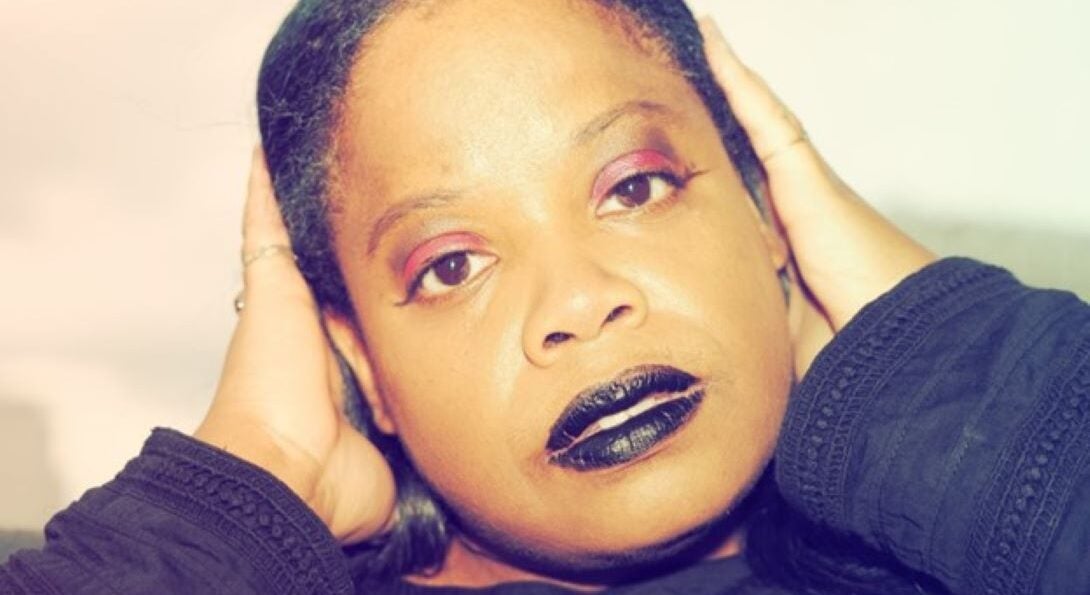Introducing Fall 2024 3Arts/Bodies of Work Fellow Terri Lynne Hudson

Introduction
Chicago-based actor and performance artist Terri Lynne Hudson’s art is inextricable from her lived experience as a disabled, chronically ill, queer person of color. However, she is not interested in educating nondisabled audiences on “what it’s like” to be her. Rather, as a 3Arts/Bodies of Work (BOW) Artist in Residence, Terri (she/her) seeks to share glimpses of her rich inner world on her own terms, embedding access as a foundational and ongoing practice.
Terri Lynne Hudson dreamed of being an actor since she was eight years-old, and she decided to pursue acting professionally after receiving a Bachelor of Arts in Humanities with a concentration in theater and film from the University of Chicago. In the time since, she has performed in a myriad of projects ranging from stage acting to audiobook narration. With the emergence of the Covid-19 pandemic, though, Terri found herself withdrawing from various projects due to safety concerns. As someone who identifies as immunocompromised, Terri shifted her focus to entirely remote opportunities, which have become increasingly rare in the face of pressures to resume in-person activities and events. Evidenced by her artwork, Terri is interested in pushing back on this trend through advocating for the inclusion of disabled and chronically ill people in the performing arts. This knowledge stems from Terri’s lived experience as a disabled and chronically ill child and who cultivated her passions from her bedroom.
Growing up in rural Georgia, Terri immersed herself in reading and writing, singing to the radio, and play-acting. Friendships were found in pen-pals and tended to over the phone. These formative years prepared her for life during a pandemic, with Terri remarking that Covid quarantine “wasn’t my first time on the merry-go-round,” in a recent interview. In their essay titled “republics of desire,” featured in Alice Wong’s anthology Disability Intimacy, disability- justice activist and poet Leah Lakshmi Piepzna-Samarasinha comments on “crip solitude skills”
(145). This concept refers to disabled people’s unique capacity to practice hobbies and nurture relationships without requiring in-person engagement, often through sustained periods of isolation and/or segregation. Piepzna-Samarasinha explains, “Like so many disabled people, I honed my crip solitude skills long before the pandemic first broke in North America…I knew how to live online and in books, in masked walks and phone calls, knew how to make group online movie nights and dance parties feel amazing, not a weak approximation of the real thing”
(145). For Piepzna-Samarasinha and Terri alike, these virtual/remote/solitary activities are neither disappointing nor lonely. In fact, Terri explains that her crip solitude skills have allowed her to build worlds that she now invites the public to witness through her artwork.
For the 3Arts/BOW residency, Terri is developing a live broadcast from her bed, revealing “all the stuff” she gets up to in a typical day. Allowing audiences to watch Terri as she goes about her work and life from her bed, this piece seeks to disrupt dominant narratives of a life lived in bed as a “sad” or “inactive” existence. Furthermore, the livestreaming modality allows for remote
access, in alignment with Terri’s assertion that “everything can be done remotely.” Livestreams can pose their own access barriers, though, when considering those who may not have stable Internet or be able to watch streamed content online. With this in mind, Terri plans to create a physical gallery installation to accompany the broadcast. Here, Terri is recognizing that access needs conflict at times. This necessitates an approach that is grounded in cross-disability solidarity, or the commitment to collective liberation across disability- and impairment- type. In doing so, we can “bridge the gaps [within the disability community] and find solutions that are mutually satisfying.” Instead of avoiding these “gaps” or tensions, Terri’s work embraces the challenge of creating inclusive art.
Terri hopes that this coalition-building practice among disabled artists will create a ripple effect through the performing-arts space. She notes that, while many performance spaces have integrated practices and measures to improve accessibility for disabled audience members, disabled and chronically ill artists continue to face exclusion from conversations on accessibility. Thus, Terri’s work intervenes to highlight the generative and inclusive art that emerges when disabled and chronically ill artists are centered and supported.
According to her, “Making things safer for some of us makes things better for all of us.”
To learn more about Terri’s work, check out her website at https://www.terrilynnehudson.com/.
Works Cited
Piepzna-Samarasinha, Leah Lakshmi. “republics of desire: disabled lineages of longing.” Disability Intimacy: Essays on Love, Care, and Desire, edited by Alice Wong, Vintage Books, 2024, pp. 144-159.
Nour Ghobrial (she/they) is a graduate student at the University of Illinois Chicago. She is working towards a PhD in disability studies with a concentration in gender and women’s studies. Her interests include healing justice, distressed eating, and feminist-of-color disability studies.